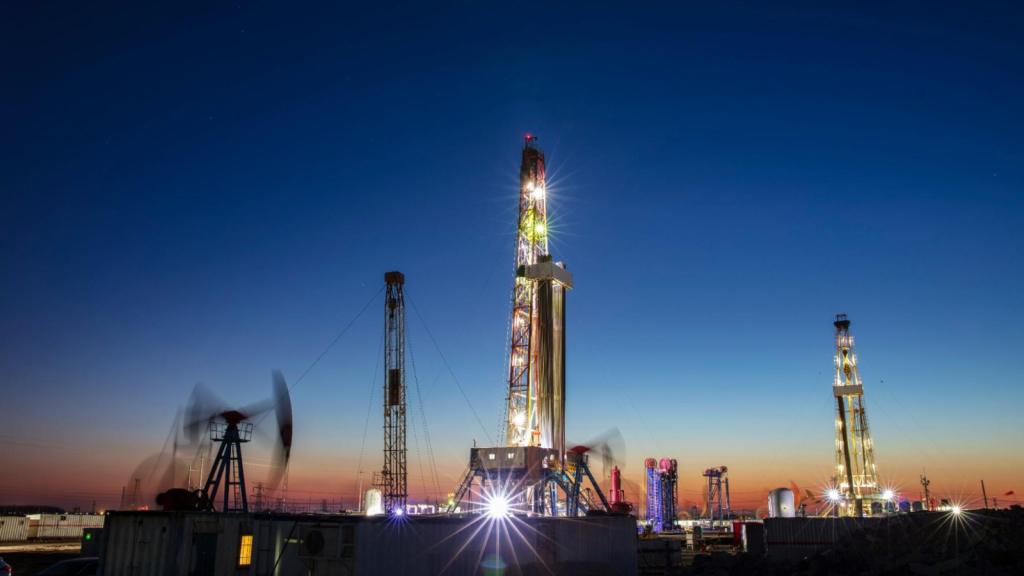ProLift Rigging: Revamping oil & gas infrastructure in the USA

Photo courtesy of
Getty Images on Unsplash.
Opinions expressed by Digital Journal contributors are their own.
The U.S. oil and gas infrastructure plays a vital role in maintaining energy security, economic stability, and industrial competitiveness. However, much of this network is aging, leading to safety risks and inefficiencies. In response, both public and private sectors are mobilizing to modernize systems through advanced technologies, strategic investments, and updated regulatory frameworks.
With key regions like the Permian Basin, Gulf Coast, and Appalachia at the center of these efforts, The The ProLift Rigging Company says that the industry is navigating a complex landscape of environmental concerns, policy shifts, and growing energy demands. These combined efforts are shaping the future of the nation’s energy infrastructure and its role in a transitioning global energy market.
Overview of U.S. oil and gas infrastructure
The oil and gas infrastructure in the United States includes an expansive network of pipelines, refineries, and storage facilities that support the production, transportation, and processing of petroleum and natural gas. Much of this network was built decades ago, with some systems dating back to the mid-20th century. In regions where the population has grown around legacy infrastructure, safety and environmental concerns have also become more prominent.
As this infrastructure continues to age, operators face recurring challenges such as corrosion, equipment failures, and the need for more frequent maintenance. In areas like the Midwest and Gulf Coast, older pipeline segments have become more vulnerable to leaks and service disruptions, pointing to a growing need for strategic updates. Despite the scale of the network, modernization has lagged in some regions due to limited funding or regulatory hurdles.
Drivers for modernization
Aging pipelines and processing equipment have contributed to a rise in safety incidents, prompting public concern and regulatory scrutiny. In some cases, leaks and ruptures have led to environmental damage and costly cleanups, intensifying the urgency for upgrades. Public trust in industry practices has also been tested, leading to increased pressure on operators to take preventive action.
Beyond safety, modernizing infrastructure offers measurable efficiency gains. Updated systems can reduce energy consumption during transport and refining, helping operators lower operational costs and meet stricter emissions standards. In competitive markets, even small efficiency improvements can enhance profitability and reduce exposure to penalties.
Public expectations have also changed. Communities near oil and gas facilities are demanding better environmental safeguards and transparency from industry players. This growing pressure is driving government bodies and companies to prioritize modernization as part of broader environmental and economic strategies.
Advances in technology and system upgrades
Technology is transforming how oil and gas infrastructure is monitored and maintained. Smart sensors, remote monitoring tools, and automated control systems now allow operators to detect issues like pressure changes or corrosion before they become major problems. These tools can also reduce the need for manual inspections, improving worker safety and response time.
New materials, including advanced coatings and corrosion-resistant alloys, are extending the lifespan of pipelines and storage tanks. These innovations help reduce downtime and repair costs while enhancing the overall safety of the system.
Real-time data analytics are also playing a critical role. By analyzing large volumes of operational data, companies can predict maintenance needs, optimize performance, and avoid potential failures. These digital tools are becoming essential in a sector that must balance reliability with evolving environmental and regulatory demands.
Policy and regulatory environment
Federal and state policies are shaping the pace and direction of oil and gas infrastructure upgrades. Legislation such as the Infrastructure Investment and Jobs Act has unlocked billions in funding, incentivizing companies to modernize aging assets while meeting updated environmental guidelines. These incentives are particularly impactful for smaller firms that may lack the capital to invest in large-scale upgrades independently.
Permitting remains a key hurdle, often slowing down essential projects due to lengthy review processes and overlapping jurisdictional requirements. These delays can deter investment and complicate planning, especially when projects span multiple states or sensitive environmental zones. The balancing act between thorough assessment and timely project approval remains a central policy debate.
Regulatory agencies are also tightening oversight on emissions and safety compliance, requiring operators to adopt more sophisticated monitoring and reporting systems. This shift is pushing the industry toward greater accountability, but it also demands significant resource allocation to meet new benchmarks.
Industry actions and investment strategies
Energy companies are actively investing in infrastructure upgrades to remain competitive and compliant. In the Permian Basin, firms have launched modernization projects that include replacing outdated pipelines and integrating digital monitoring systems to improve efficiency and reduce downtime. Some of these upgrades also aim to support carbon capture and storage initiatives, aligning with broader decarbonization goals.
Public-private partnerships are becoming more common, especially where large-scale improvements demand technical expertise and financial backing. These collaborations allow infrastructure development to proceed more quickly while aligning with public interests such as job creation and environmental stewardship. Such partnerships also help navigate community engagement and regulatory compliance more smoothly.
Some companies are also diversifying their energy portfolios, incorporating renewable technologies into existing operations. This hybrid approach is part of a broader strategy to future-proof assets and respond to shifting policy and market pressures.
Regional focus and outlook
Different regions face their own unique infrastructure challenges. Along the Gulf Coast, extreme weather events have exposed vulnerabilities in coastal refineries and transport networks, leading to renewed focus on climate resilience and disaster preparedness. In response, some operators are elevating facilities and reinforcing key assets to withstand flooding and hurricanes.
In Appalachia, infrastructure expansion has sparked debates between economic development and environmental protection. While the region holds vast natural gas reserves, local opposition to new projects has slowed progress, requiring careful negotiation between stakeholders. Legal challenges and public hearings often extend timelines, affecting the economic feasibility of new ventures.
ProLift Rigging: Revamping oil & gas infrastructure in the USA
#ProLift #Rigging #Revamping #oil #gas #infrastructure #USA







